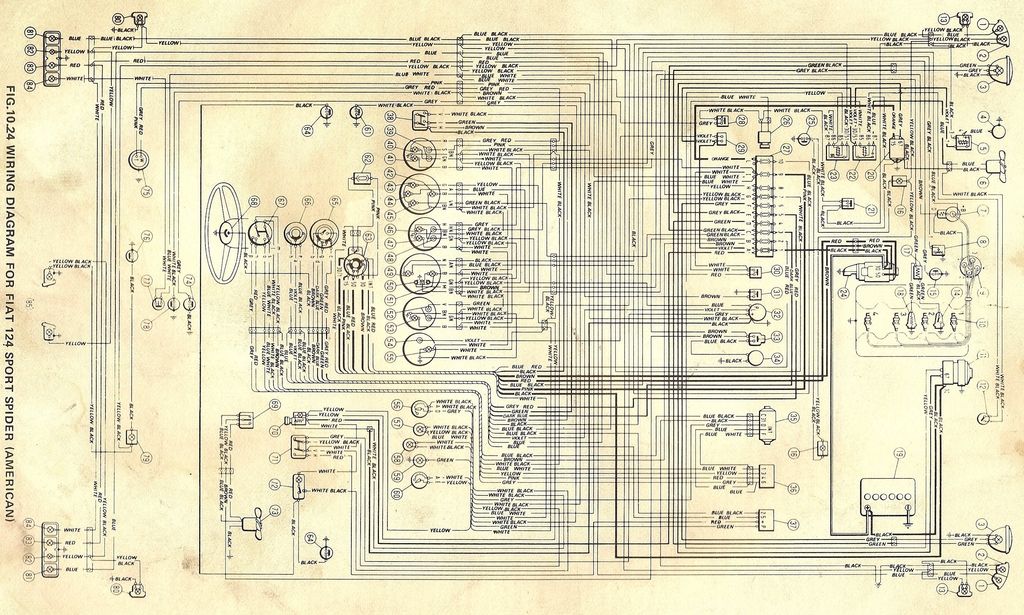
Found a service here is the pic of my engine bay.


That would be simple if one knew what a continuity check is. I was just trying to get an answer from someone who knows versus me taking a guess at it. I figure I will have to trust the wiring diagram and hope the previous owner (a mad electrical scientist) didn't mess with this system.A simple continuity check
Spend $20 and get yourself a volt-ohm meter. It's an essential tool. Try to get an analog type as those are better for a beginner (and they are less expensive). On the ohm setting, touch each end of a disconnected wire. If the ohms goes to zero then there is no resistance, meaning that the wire has continuity and will flow electricity.70spider wrote:That would be simple if one knew what a continuity check is. I was just trying to get an answer from someone who knows versus me taking a guess at it. I figure I will have to trust the wiring diagram and hope the previous owner (a mad electrical scientist) didn't mess with this system.A simple continuity check
R = E/I Resistance = voltage divided by current. The multimeter has a battery of known voltage. When you place the two meter leads on either end of a circuit while selected to Ohms (the units of resistance) it causes a current flow that is inversely proportional to the resistance (the lower the resistance the greater the current for a set voltage). For a continuous wire (continuity meaning without break) the resistance is very low so the meter sees higher current (amps) for the set voltage applied. For a wire the resistance should read very low, only a few ohms at most. This reading tells you you have a complete circuit, i.e. that that wire is a continuous path between two points. If you disconnect the wire at the alternator you think is from the voltage regulator and disconnect the wire at the regulator and take a ohm reading between the two you should see only an ohm or two resistance thereby confirming that is the wire. If you see infinite resistance then the two connection points are not connected and that isn't the same wire.Yadkin wrote:Spend $20 and get yourself a volt-ohm meter. It's an essential tool. Try to get an analog type as those are better for a beginner (and they are less expensive). On the ohm setting, touch each end of a disconnected wire. If the ohms goes to zero then there is no resistance, meaning that the wire has continuity and will flow electricity.

For someone who has not used a volt/ohm meter I believe an analog meter is more easily damaged when accidentally connected reverse polarity or on the wrong scale. Digital meters usually display a + or - sign for polarity and are much more forgiving if used on the wrong scale. For the most part an inexpensive digital meter will be more robust and have more features than an similar priced analog meter. For a person learning to use a meter the digital meter Harbor Freight sometimes gives away "free" is a great meter to start with.Try to get an analog type

